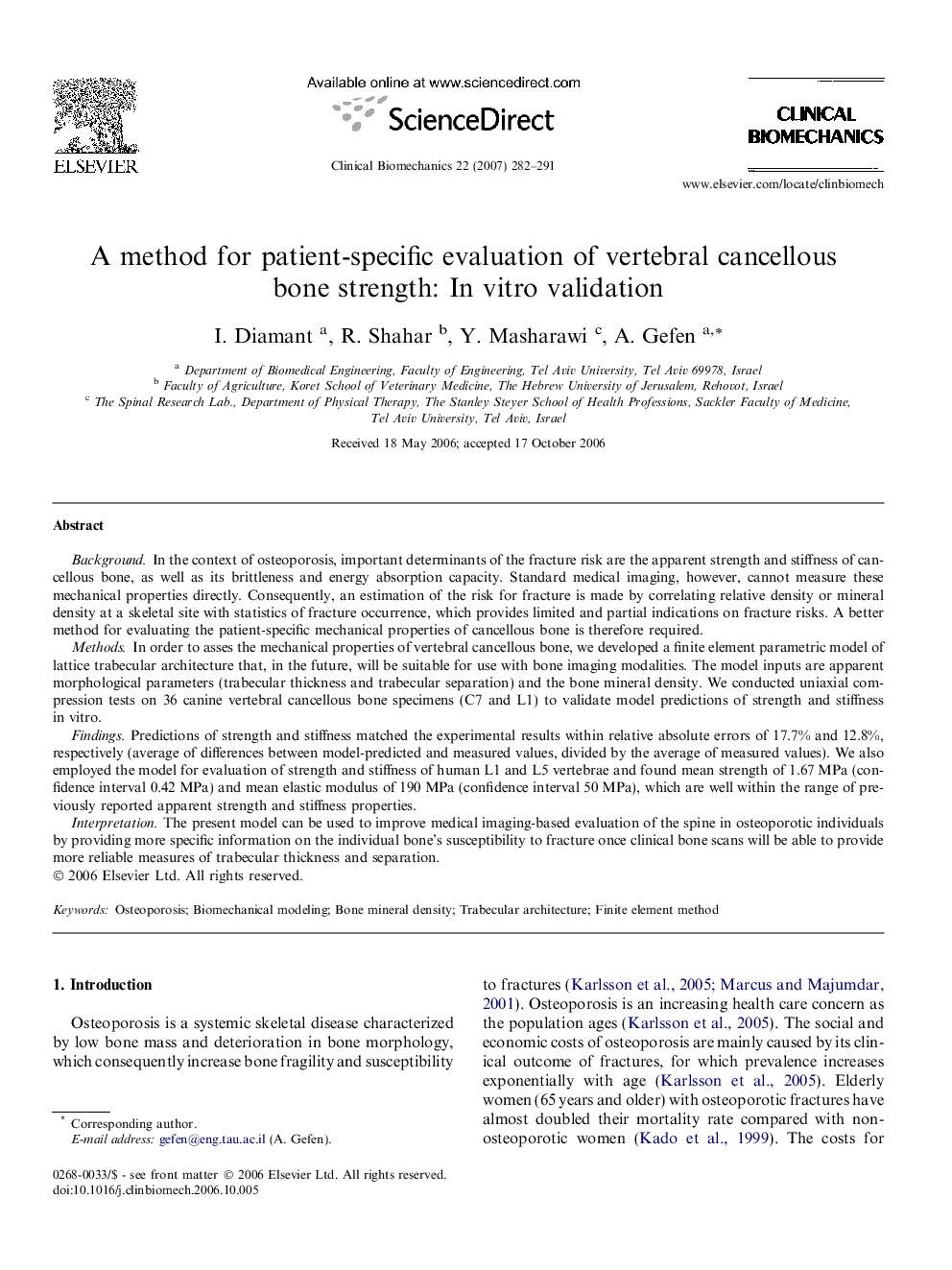| کد مقاله | کد نشریه | سال انتشار | مقاله انگلیسی | نسخه تمام متن |
|---|---|---|---|---|
| 4051701 | 1265005 | 2007 | 10 صفحه PDF | دانلود رایگان |

BackgroundIn the context of osteoporosis, important determinants of the fracture risk are the apparent strength and stiffness of cancellous bone, as well as its brittleness and energy absorption capacity. Standard medical imaging, however, cannot measure these mechanical properties directly. Consequently, an estimation of the risk for fracture is made by correlating relative density or mineral density at a skeletal site with statistics of fracture occurrence, which provides limited and partial indications on fracture risks. A better method for evaluating the patient-specific mechanical properties of cancellous bone is therefore required.MethodsIn order to asses the mechanical properties of vertebral cancellous bone, we developed a finite element parametric model of lattice trabecular architecture that, in the future, will be suitable for use with bone imaging modalities. The model inputs are apparent morphological parameters (trabecular thickness and trabecular separation) and the bone mineral density. We conducted uniaxial compression tests on 36 canine vertebral cancellous bone specimens (C7 and L1) to validate model predictions of strength and stiffness in vitro.FindingsPredictions of strength and stiffness matched the experimental results within relative absolute errors of 17.7% and 12.8%, respectively (average of differences between model-predicted and measured values, divided by the average of measured values). We also employed the model for evaluation of strength and stiffness of human L1 and L5 vertebrae and found mean strength of 1.67 MPa (confidence interval 0.42 MPa) and mean elastic modulus of 190 MPa (confidence interval 50 MPa), which are well within the range of previously reported apparent strength and stiffness properties.InterpretationThe present model can be used to improve medical imaging-based evaluation of the spine in osteoporotic individuals by providing more specific information on the individual bone’s susceptibility to fracture once clinical bone scans will be able to provide more reliable measures of trabecular thickness and separation.
Journal: Clinical Biomechanics - Volume 22, Issue 3, March 2007, Pages 282–291